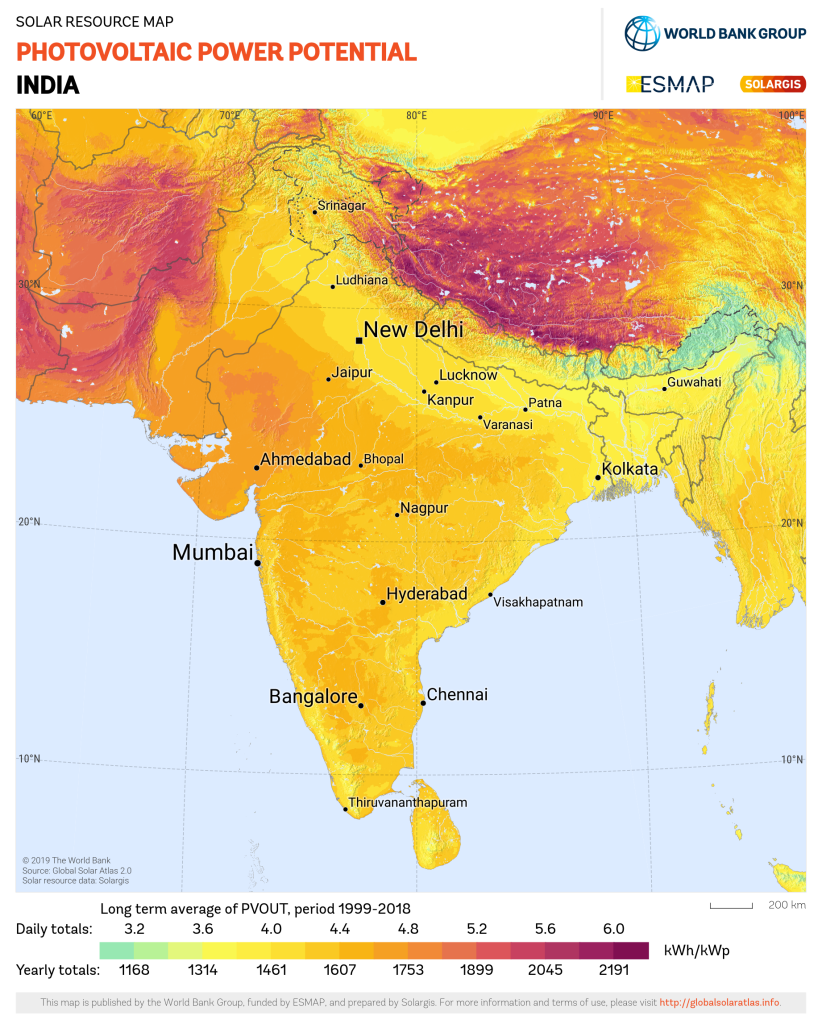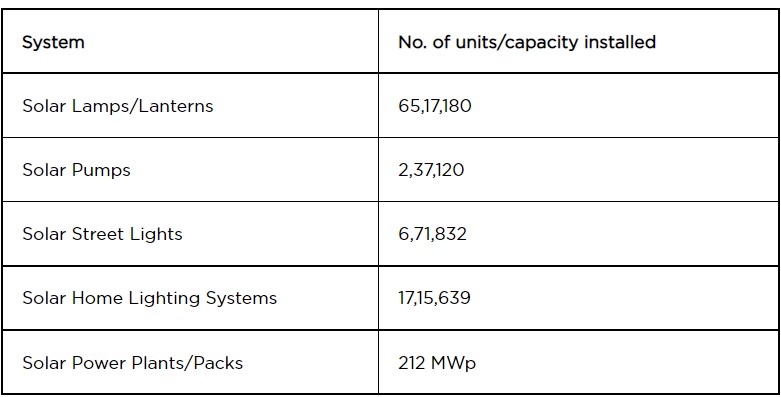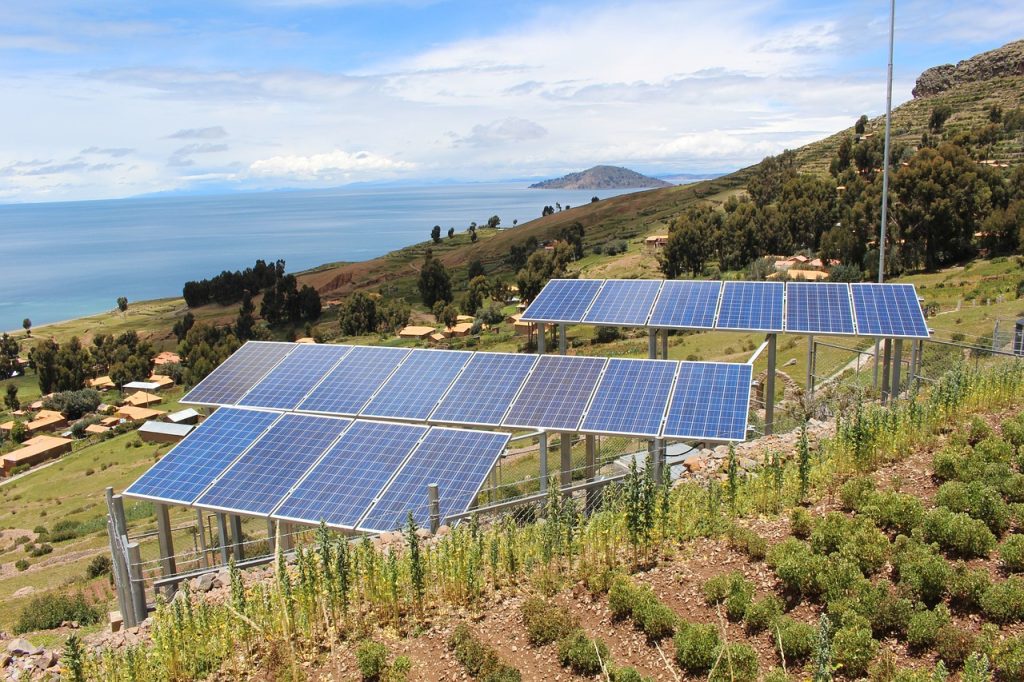Development in renewable energy has been on a positive note for India but is still far from achieving its goal. Nevertheless, from the previous article (sneak Peek), solar energy is the leading contributor to India’s renewable energy sector. India now has World’s first 100% solar-powered airport at Cochin, Kerela. India has higher ambition in the renewable energy sector, which can be seen from the policies and investments made by the government and private players. Before diving into more technicalities and investigating the future, we first need to see the current condition. let’s see the present scenario and usage of solar energy in India.
Solar energy potential in India
By now one thing should be clear, metrological data is a very important aspect as far as harnessing solar power is concerned. So, what does metrological data say for India? We can get an idea from the picture below.

This picture gives an idea about the potential of solar power that can be harnessed using PV installations. If we have to understand this picture in laymen’s terms, then one thing is clear; India has good photovoltaic power potential with a daily average output of around 4.4 to 4.5 kilowatt-hour per installed kilowatt of capacity (KWh/KWp). The solar energy available in India in a year exceeds the energy output of all the fossil fuel energy reserves in India can be a good metaphor for understanding this data’s magnitude.
Photovoltaic power Potential: The potential for electricity generation from solar photovoltaic sources.
Progress So far in India.
As of 31st March 2021, India has an installed capacity of 40.1 GW whereas, the goal is to reach a total grid connection capacity of 100 GW by 2022. Rajasthan and Karnataka are the leading states in terms of installed capacity. India has developed both off-grid and grid connections. Some stats for off-grid PV development are:

India has one of the largest solar parks (Bhadla solar park, Rajasthan). In total, there are more than 40 solar parks in different parts of India, and many more to come. The most common types of PV cells used are flat-panel PV. PV cell materials used are mostly crystalline silicon materials (monocrystalline and polycrystalline solar panels). They are first-generation solar panels. Different types of solar panels are:
- First generation – Crystalline silicon (commonly used in India)
- 2nd generation – Thin film
- 3rd generation – Concentrator PV, organic PV (mostly in R&D)
Several schemes such as solar park schemes, VGF Schemes, CPSU Schemes, Defense Scheme, etc. have been launched to boost solar power generation in India. Not just that, there are policies and schemes available to boost the manufacturing sector for PV and required technologies as well.
There are plans in place for boosting renewable energy production but just one wish that unlike past situations all these policies and schemes must not become just another piece of paper, and nothing happens although, the present scenario doesn’t suggest that.

